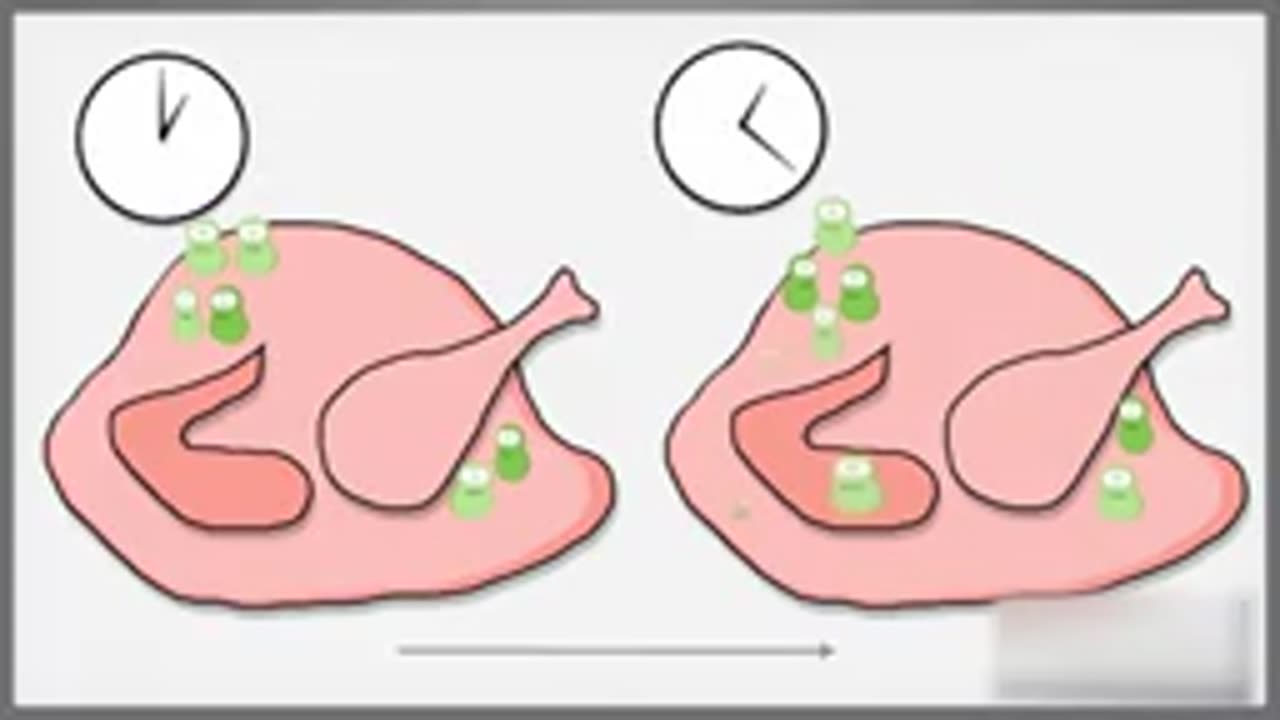Premium Only Content

Food Risk Categories (HACCP Lessons - Part 10)
### Food Risk Categories (HACCP Lessons - Part 10)
Classifying food into different risk categories is a key step in implementing an effective Hazard Analysis and Critical Control Points (HACCP) system. Food risk categories help prioritize safety measures, determine critical control points (CCPs), and guide monitoring protocols. This lesson covers the main food risk categories, their characteristics, and corresponding control measures.
---
### **1. High-Risk Foods**
These foods are most susceptible to microbial contamination and can pose serious health risks if not handled properly.
#### Examples:
- **Raw and cooked meat and poultry**
- **Seafood and shellfish**
- **Dairy products** (milk, cream, soft cheeses)
- **Ready-to-eat foods** (sandwiches, salads, pre-cooked meals)
- **Eggs** and products containing raw eggs
- **Cooked rice and pasta**
#### Characteristics:
- High moisture content.
- Rich in nutrients.
- Neutral to slightly acidic pH.
- Require refrigeration or controlled storage temperatures.
#### Control Measures:
- Maintain cold chain: store below 5°C (41°F).
- Cook to recommended internal temperatures (e.g., 75°C/167°F for poultry).
- Prevent cross-contamination by segregating raw and cooked foods.
- Regularly clean and sanitize equipment and surfaces.
---
### **2. Medium-Risk Foods**
These foods are less prone to spoilage and contamination than high-risk foods but still require careful handling.
#### Examples:
- Canned or packaged foods (after opening).
- Certain baked goods with fillings (e.g., cream pies).
- Fermented foods (e.g., yogurt, pickles).
#### Characteristics:
- May contain preservatives or have undergone processing.
- Lower water activity or pH compared to high-risk foods.
#### Control Measures:
- Store according to manufacturer recommendations.
- Monitor expiry dates and conditions after opening.
- Use proper sealing to prevent contamination.
---
### **3. Low-Risk Foods**
Low-risk foods have minimal susceptibility to contamination under normal storage conditions.
#### Examples:
- Dry goods (e.g., rice, flour, sugar).
- Shelf-stable canned goods (before opening).
- Snack foods (e.g., chips, crackers).
- Whole, unprocessed fruits and vegetables.
#### Characteristics:
- Low water activity.
- Acidic pH in some cases.
- Stable under ambient conditions.
#### Control Measures:
- Store in a clean, dry area.
- Ensure packaging integrity to avoid contamination.
- Rotate stock to use older products first (FIFO: First In, First Out).
---
### **4. Special Risk Categories**
Some foods require specific attention due to their unique risks or properties.
#### **Allergen-Risk Foods**
Foods containing allergens like peanuts, tree nuts, dairy, eggs, soy, wheat, fish, or shellfish.
- **Control Measures**: Clearly label allergens, prevent cross-contact, and segregate allergenic foods during processing.
#### **Vacuum-Packed or Sous-Vide Foods**
These foods have limited oxygen, which can promote the growth of anaerobic bacteria like *Clostridium botulinum*.
- **Control Measures**: Store at appropriate temperatures, and follow strict processing guidelines.
#### **Sprouts and Leafy Greens**
These are often consumed raw and may carry pathogens like *Salmonella* or *E. coli*.
- **Control Measures**: Use tested water sources, maintain proper hygiene during harvesting and processing, and keep refrigerated.
---
### **5. Cross-Risk Factors**
Some foods fall into multiple risk categories due to how they are processed, stored, or consumed.
#### Examples:
- A canned soup (low-risk when unopened, medium-risk once opened).
- Pre-packed salads with cooked chicken (combines high-risk and medium-risk components).
#### Control Measures:
- Consider the highest applicable risk category.
- Follow handling procedures for all risk levels involved.
---
### **6. Practical Application in HACCP**
#### **Hazard Analysis**:
- Identify risks for each food category (biological, chemical, physical).
#### **CCPs**:
- Assign CCPs based on risk (e.g., cooking, chilling, storage).
#### **Monitoring**:
- Tailor monitoring protocols to the risk level (e.g., temperature logs for high-risk foods).
#### **Training**:
- Train staff to recognize and manage risks associated with different food categories.
---
### **Conclusion**
Understanding food risk categories allows for targeted and effective food safety management. By identifying and addressing risks based on food characteristics, HACCP systems can ensure the safety of products and compliance with regulatory requirements.
Would you like a chart summarizing these risk categories or a specific example for your business?
-
 6:46:07
6:46:07
Rance's Gaming Corner
11 hours agoTime for some RUMBLE FPS!! Get in here.. w/Fragniac
131K1 -
 1:30:48
1:30:48
Josh Pate's College Football Show
11 hours ago $4.49 earnedCFP Reaction Special | Early Quarterfinal Thoughts | Transfer Portal Intel | Fixing The Playoff
31.4K -
 23:55
23:55
CartierFamily
3 days agoElon & Vivek TRIGGER Congress as DOGE SHUTS DOWN Government
111K101 -
 5:43:44
5:43:44
Scammer Payback
2 days agoCalling Scammers Live
182K26 -
 18:38
18:38
VSiNLive
2 days agoProfessional Gambler Steve Fezzik LOVES this UNDERVALUED Point Spread!
135K17 -
 LIVE
LIVE
Right Side Broadcasting Network
10 days agoLIVE REPLAY: President Donald J. Trump Keynotes TPUSA’s AmFest 2024 Conference - 12/22/24
3,060 watching -
 4:31
4:31
CoachTY
1 day ago $27.90 earnedCOINBASE AND DESCI !!!!
180K11 -
 10:02
10:02
MichaelBisping
1 day agoBISPING: "Was FURY ROBBED?!" | Oleksandr Usyk vs Tyson Fury 2 INSTANT REACTION
101K14 -
 8:08
8:08
Guns & Gadgets 2nd Amendment News
2 days ago16 States Join Forces To Sue Firearm Manufacturers Out of Business - 1st Target = GLOCK
123K90 -
 10:17
10:17
Dermatologist Dr. Dustin Portela
2 days ago $18.75 earnedOlay Cleansing Melts: Dermatologist's Honest Review
159K14